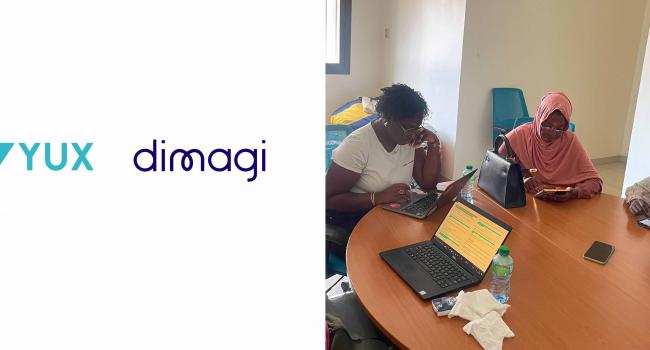Introduction
Earlier this year, GSMA partnered with us for an 8-week design sprint alongside Safaricom, aiming to boost the uptake and usage of Pochi La Biashara, an M-Pesa product with immense potential to empower women micro-entrepreneurs in Kenya. Throughout this sprint, we set off on an intensive journey of research, ideation, and prototyping to tackle challenges and unlock new opportunities for these women. In this case study, we’re happy to share the process, insights, and key learnings from what turned out to be great collaboration with Safaricom and GSMA.
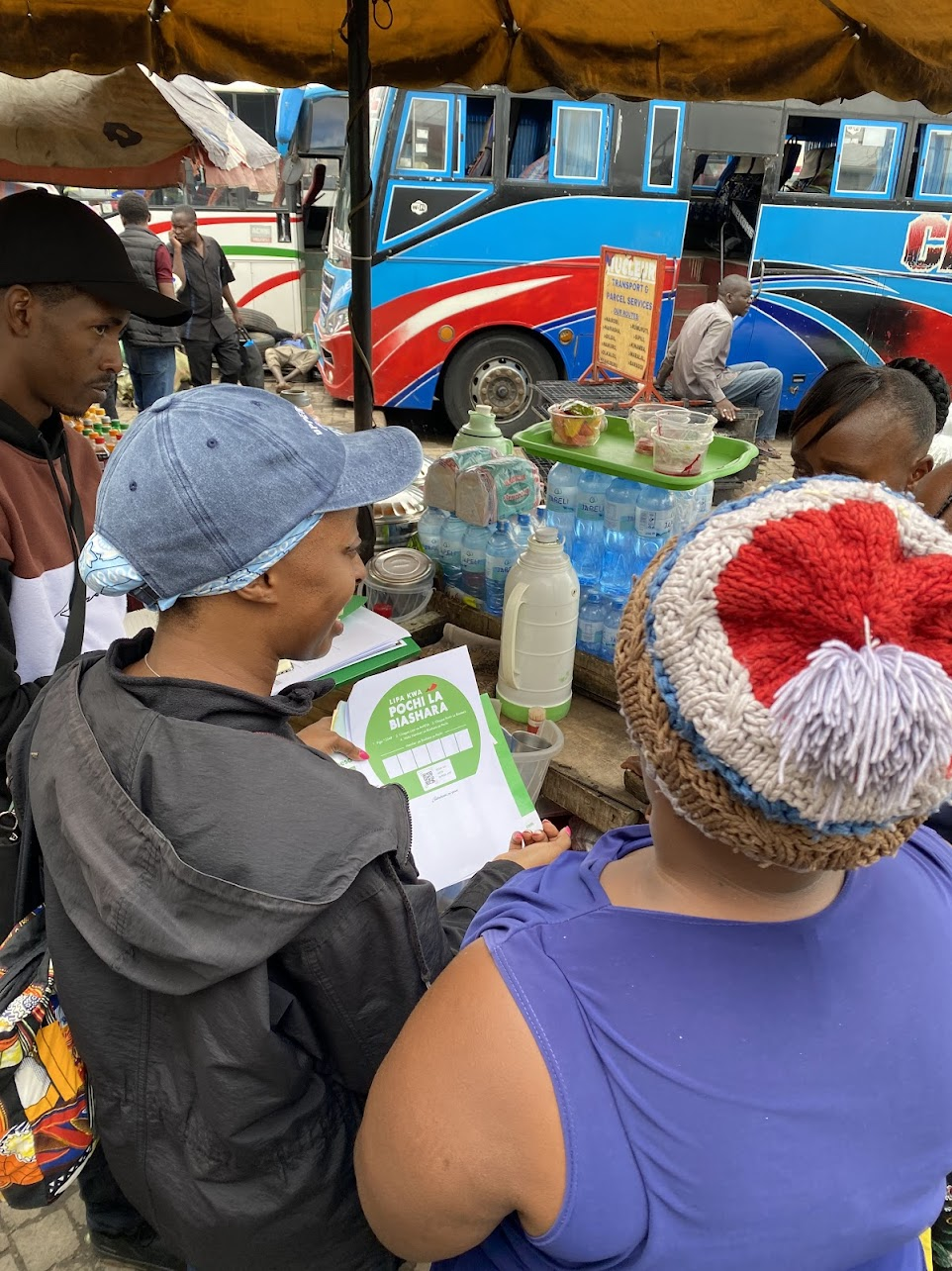
What is Pochi La Biashara?
In Kiswahili, Pochi La BIashara translates to ‘business wallet’. As explained on Safaricom’s website, Pochi is ‘a product that allows business owners such as food vendors, small kiosk owners, boda-boda operators, second hand clothes dealers, etc., to receive and separate business funds from personal funds on their M-PESA line.’ Beyond this, it offers merchants additional benefits, such as protection from customer reversals, the ability to earn a 5% commission when selling airtime, and more. For the Kenyans reading this, think of Pochi as a way to have a version of a till number using their own phone number, and without all the paperwork required of a formal business.
The Design Sprint Objectives
At the start of our project, the teams from GSMA and Safaricom had some initial thoughts about how Pochi La Biashara was positioned and used by micro-entrepreneurs, particularly through a gendered lens. The quantitative data revealed that the product's usage had grown significantly across various industries, with a notable increase in male-dominated sectors like public transport. Despite this positive trend, we suspected that women micro-entrepreneurs were encountering unique challenges such as women may be more hesitant to publicly share their phone numbers due to fears of harassment and unwanted calls, which could hinder their ability to run their businesses effectively.
With context in mind, the main objective of the design sprint was to understand how to increase the uptake and usage of Pochi among women micro-entrepreneurs in Kenya. More specifically, we had to:
- Understand users’ pain points along the Pochi journey
- Assess Pochi’s Value Proposition to understand what aspects of the product appealed most to women micro-merchants
- Explore WME’s (women micro-entrepreneurs) desired enhancements for Pochi
This project marked a significant shift for Safaricom, as it was one of the first times they conducted research with a gender-intentional lens. Additionally, tight deadlines in big tech companies typically lead to a short or abbreviated research phase, but this time, we prioritized understanding the unique needs and challenges faced by women micro-entrepreneurs. GSMA was particularly interested in the experience of the rural, woman, micro-entrepreneur. The reasoning was that if we could design for this profile which is typically more disadvantaged, we would likely solve problems for other, more privileged users on the spectrum along the way.
Sampling & Recruitment
Together with the Safaricom teams, we selected the following locations to speak with merchants from a range of urban and rural markets across Nairobi and Nakuru. In Nairobi, we visited Gikomba (urban), Kawangware, and Dagoretti (semi-urban). In Nakuru, we went to Nakuru CBD (urban), Njoro (rural).
Recruitment was crucial, as we wanted to include merchants at different stages of adoption: those not registered on Pochi, those registered but inactive, and those actively using it. We relied heavily on Safaricom’s trade representatives (essentially on-ground customer service reps), who were familiar with the markets and merchants, and helped us to do recruitment on-the-go. Their involvement was instrumental in establishing trust and ensuring we had a representative sample.
In addition, we also planned to speak to a smaller sample of male merchants (to be able to understand what learnings might be gender-specific), as well as customers who pay through Pochi (to understand how the customer journey might impact Pochi’s adoption). In the end, we had interviews with 42 merchants (30 women and 12 men), and 5 customers, during this phase.
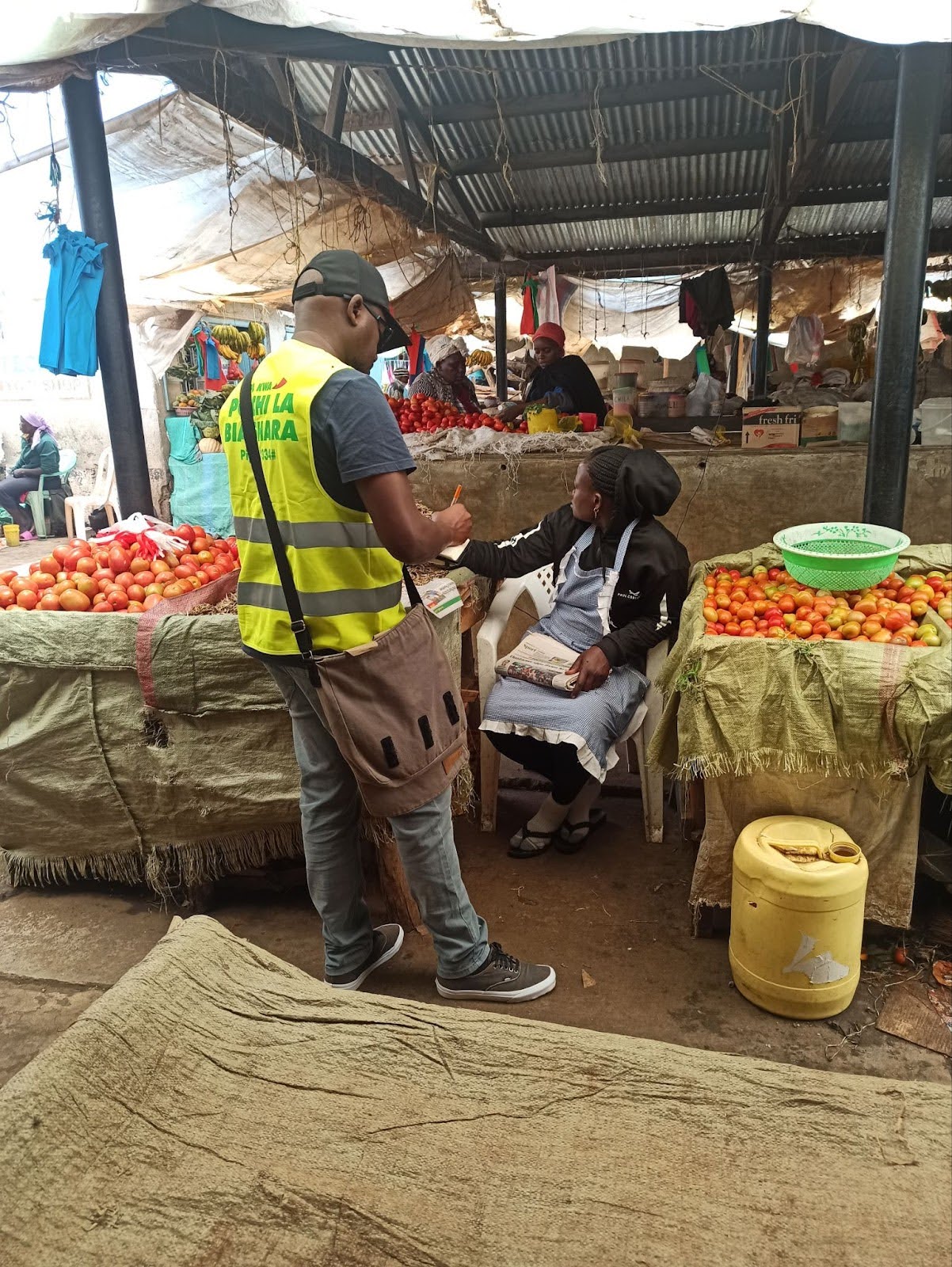
Research Learnings
The first phase of research uncovered several valuable insights into how merchants, especially women merchants, perceived and used Pochi. Some of these highlights include:
- Peer Influence and Information Gaps: Peer-influence on adoption was especially strong among women, but they often lacked comprehensive information about Pochi’s offerings, leading to some spread of misinformation and misunderstandings of its value proposition and features.
- Gender Norms in Decision-Making: Financial and business decision-making power often shifted to male partners, which often reduced women’s interaction with Pochi.
- Confidence with Digital: More men than women were proficient in using Pochi and aware of its full spectrum of features, possibly due to higher digital confidence among men in exploring and experimenting with new products.
- Perceived Risks and Opportunities: While some merchants viewed the display of their personal numbers as a risk, others saw it as a way for customers to reconnect with them, indicating varying risk perceptions. Interestingly, we found that this learning applied to both men and women.
- Customer Awareness: Many customers were unaware of how to pay with Pochi, adding an extra burden on merchants to guide them through the payment process.
- Innovative Uses of Pochi: We also uncovered creative ways merchants were using Pochi as a second wallet beyond its intended purpose of separating business and personal funds. For example, one husband and wife duo used Pochi to separate income streams from different parts of their business (see below).
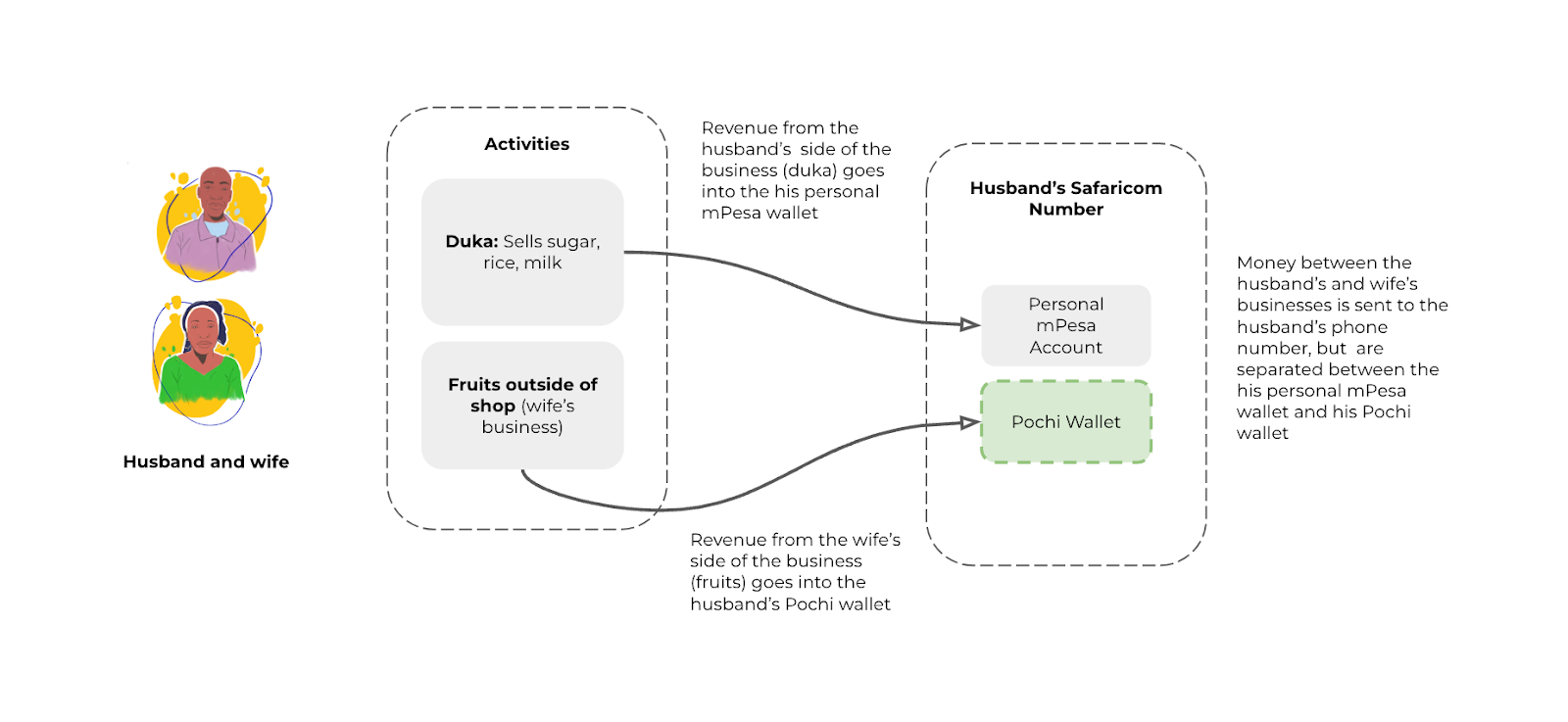
From our learnings, we also created a series of archetypes of users that we met along the spectrum of adoption, from not registered or inactive, to active.
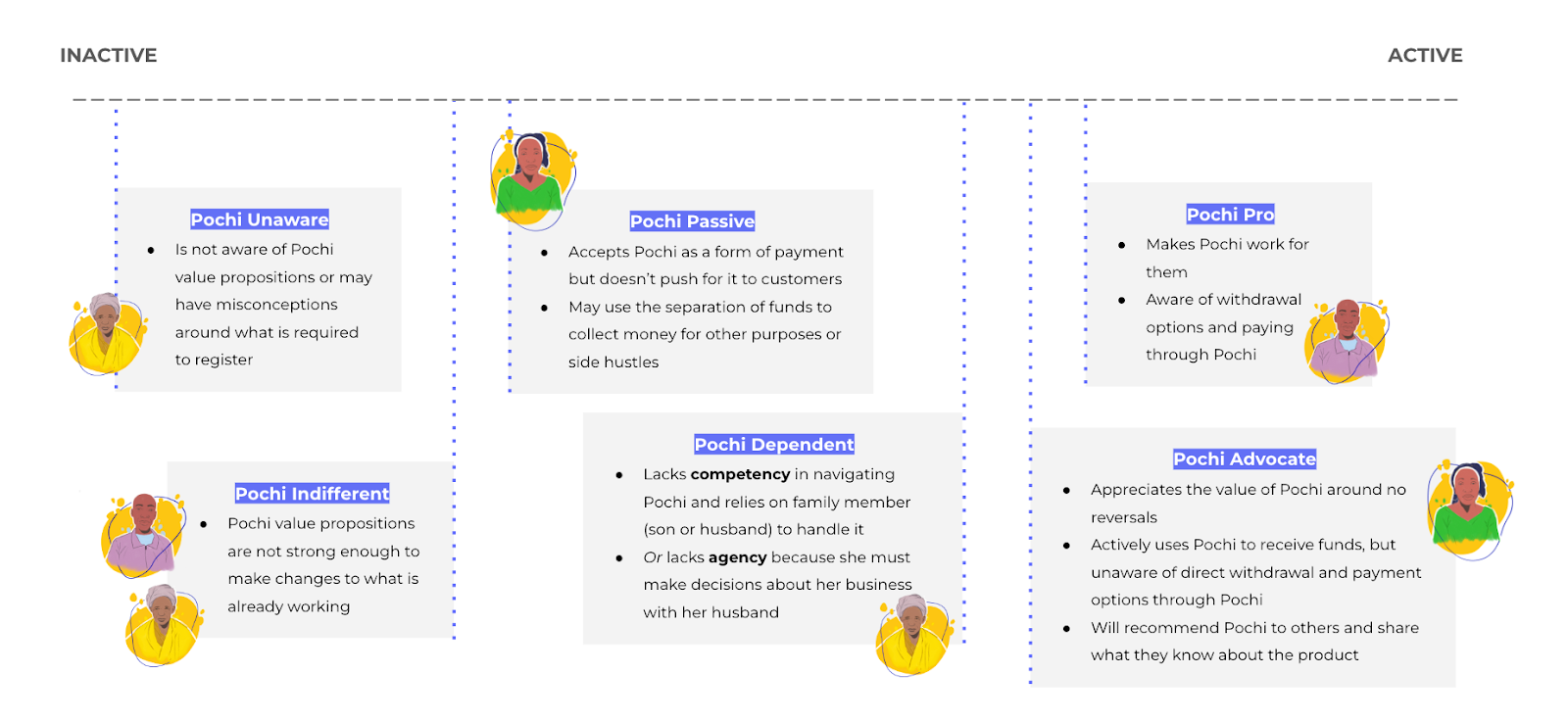
Product Iteration Workshop
At the midpoint of the design sprint, we held a 2-day product iteration workshop with key stakeholders from Safaricom and GSMA. During the workshop, we presented our research findings, prioritized opportunity areas using "How Might We" (HMW) questions, and brainstormed ideas to address these opportunities. Participants included members from UI/UX design, growth, sales and marketing, and customer journey specialists.
What made this step particularly interesting was the diversity of perspectives in the room, which helped in generating a broad range of ideas. We opted to use the MoSCoW prioritization matrix (Must have, Should have, Could have, Won’t have) instead of the more complex Impact/Effort matrix. This simpler approach allowed us to quickly align on the most critical features to prototype.
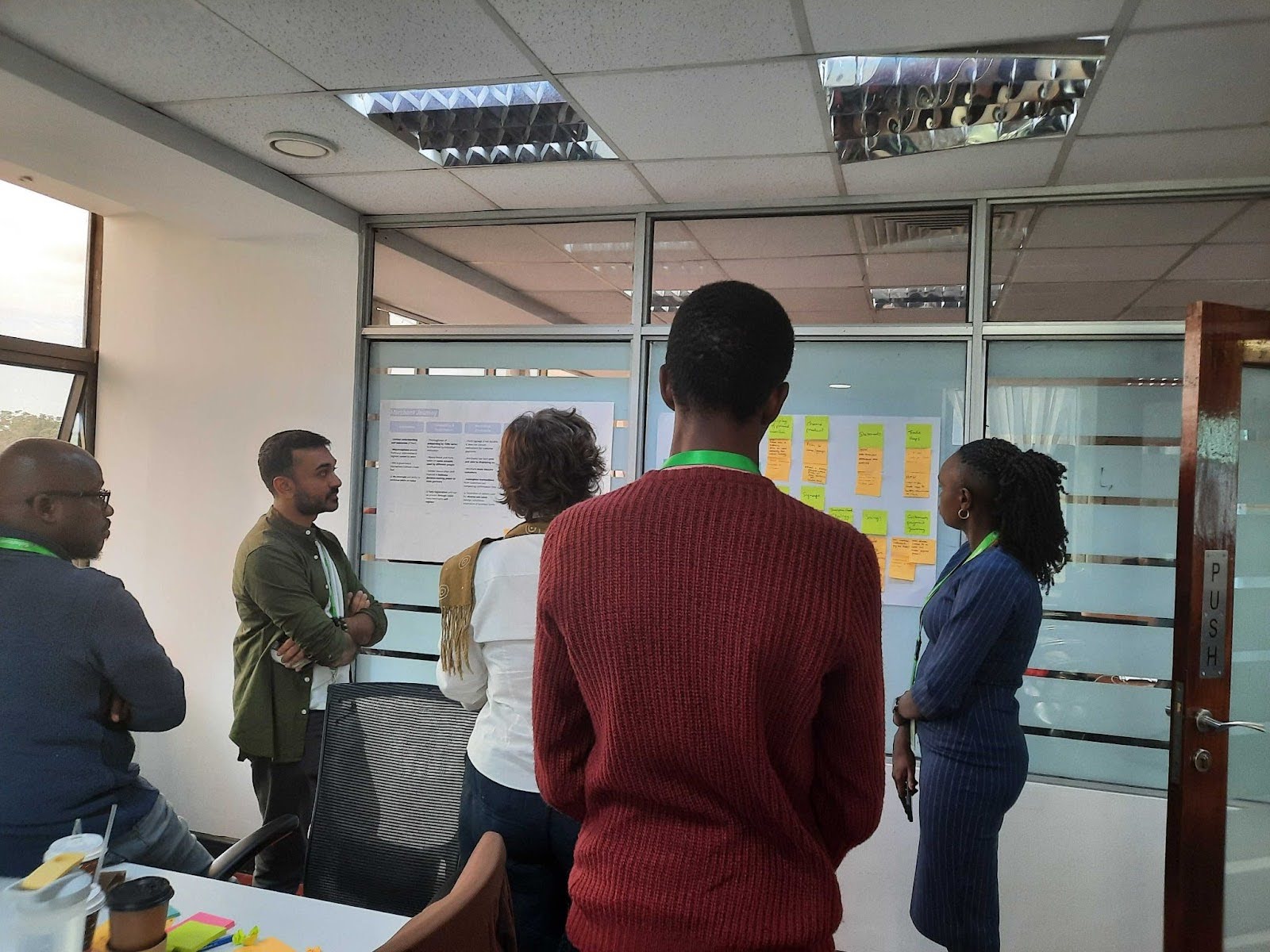
Prototyping
We prototyped 8 concepts in the span of a week, which was a bit too ambitious in hindsight! These ranged from marketing and branding materials to increase awareness and debunk misconceptions, incentive posters, tutorials to encourage the trialability of new features, phone number masking methods, and a Figma prototype of a simplified customer journey. With only two days to create these concepts, our team managed to deliver on time, thanks in part to AI image generation tools such as Dreamstudio and Microsoft Co-pilot. Check out some of these examples below:
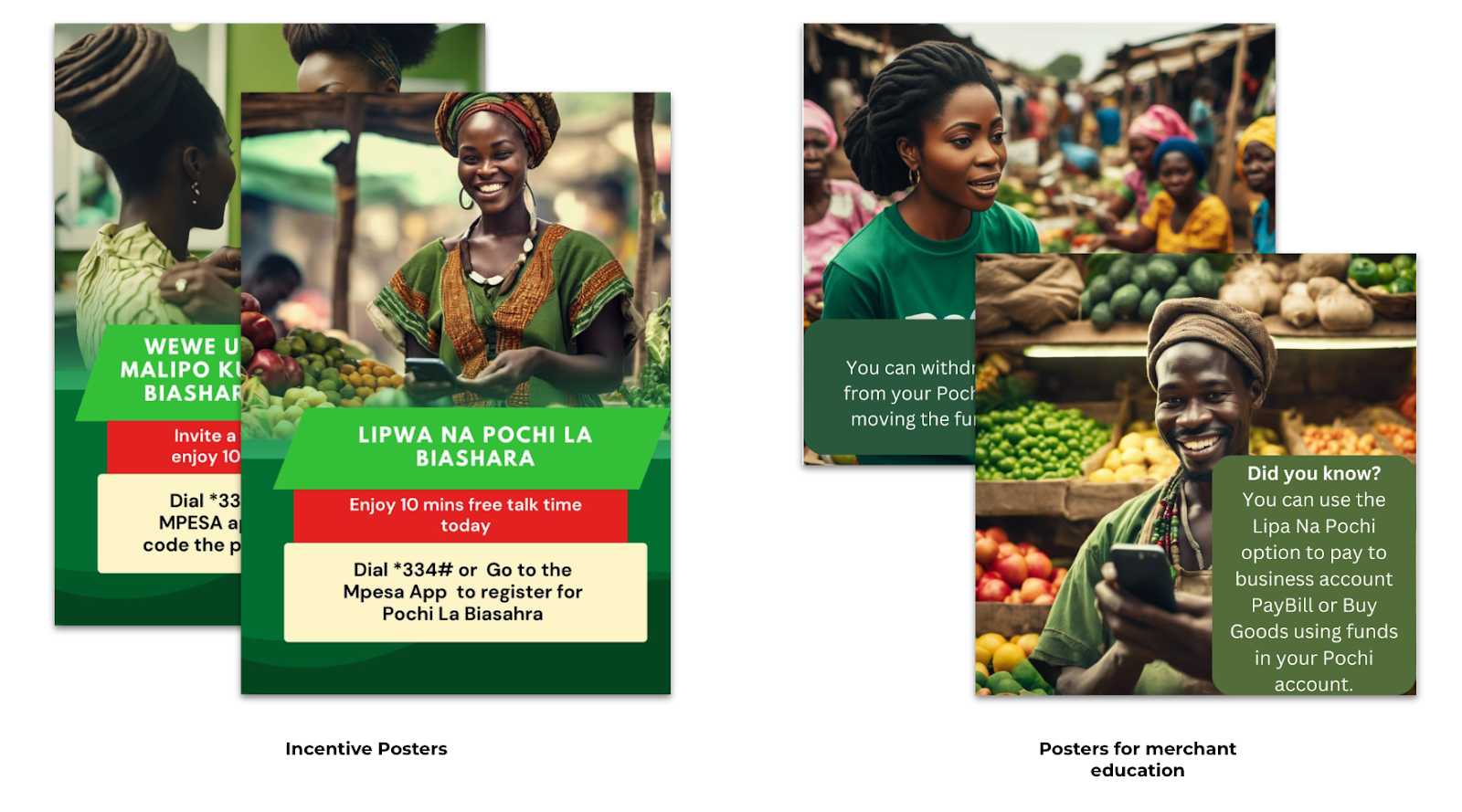
We then went back out into the markets of Nairobi and Nakuru to test out these concepts with merchants, both new and some that we had encountered during the research phase of the sprint. The learnings from this phase were then shared back with the Safaricom team during a final debrief workshop, where we also prioritized actions that they could take going forward.
Impact & Next Steps
The insights from this sprint have directly influenced Safaricom's roadmap for the next six months, including marketing and distribution strategies, product enhancements, and messaging refinements (with a gender-intentional lens 😉). Safaricom has already started working on the implementation of one of the solutions from our design sprint—so if you're in Kenya, keep an eye out! And what’s next after this? GSMA will continue working with an impact assessment partner to measure the effectiveness of Safaricom’s implementations over a longer period of time.
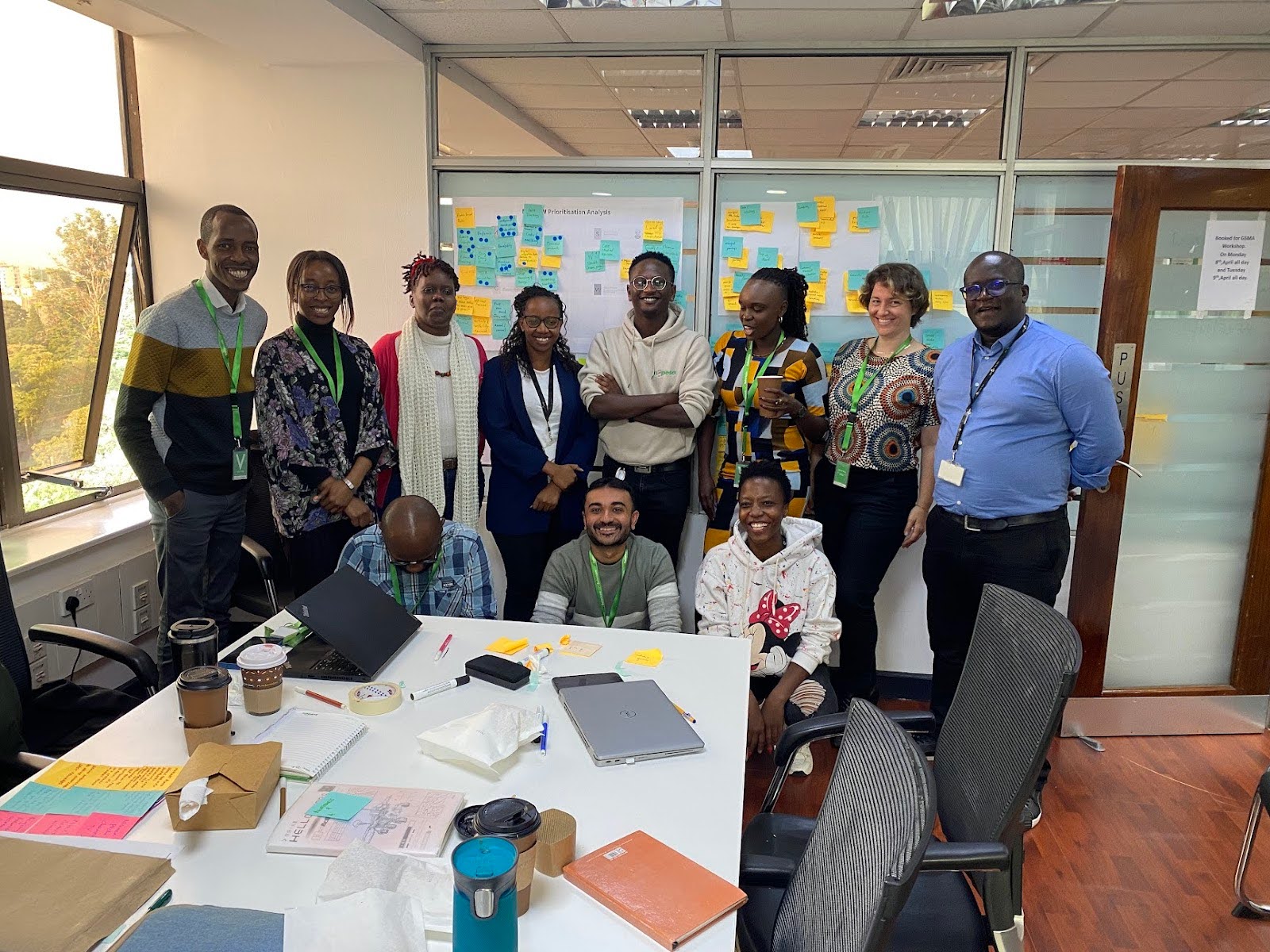
Our reflections on the process
This design sprint underscored the value of gender-intentional research and cross-functional collaboration in developing solutions that truly meet the needs of women micro-entrepreneurs. It also highlighted the importance of iterative prototyping and the need for flexible prioritization methods in fast-paced environments. Overall, the sprint not only provided actionable insights but also paved the way for more inclusive product development at Safaricom.
A huge thanks to all of the team members involved in making this happen!
YUX Project Leadership: Rajay Shah, Sasha Ofori, Camille Kramer
Research Team: Melissah Weya, Francis Mwangi, Sheila Zubeda, Simeon Kamunde
GSMA Lead: Adem Esther
Pochi Lead: Nora Mbaya (Growth), Kelvin Mutiso (UI/UX)

